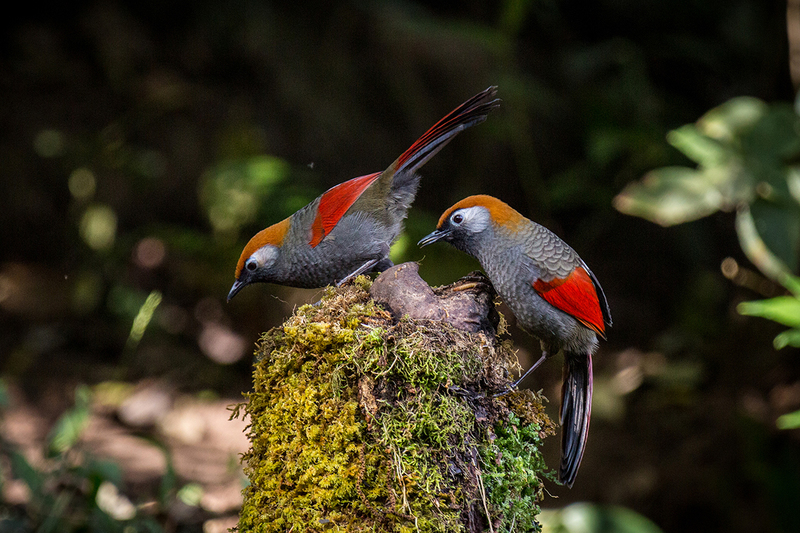|
 Our region – the Hindu Kush Himalaya – has been hit hard by the perfect storm of the triple planetary crises of climate change, pollution, and biodiversity loss. Against this backdrop, this year’s theme for the International Day of Biological Diversity – From agreement to action: Build back biodiversity – brings a renewed sense of hope while also underscoring the urgency of implementation. The hope comes from the adoption of the historic Kunming-Montreal Global Biodiversity Framework, with all parties committed to setting national targets to implement it, putting us on an ambitious pathway to achieve the shared vison of a world living in harmony with nature by 2050. Our region – the Hindu Kush Himalaya – has been hit hard by the perfect storm of the triple planetary crises of climate change, pollution, and biodiversity loss. Against this backdrop, this year’s theme for the International Day of Biological Diversity – From agreement to action: Build back biodiversity – brings a renewed sense of hope while also underscoring the urgency of implementation. The hope comes from the adoption of the historic Kunming-Montreal Global Biodiversity Framework, with all parties committed to setting national targets to implement it, putting us on an ambitious pathway to achieve the shared vison of a world living in harmony with nature by 2050.
Our recent review showed that 50 percent of globally threatened species are in decline and the status of 25 percent is unknown. We need to step up our engagement and support transformative action at scale and with urgency if we are to reverse the biodiversity loss that we have witnessed over the past few decades. We have prioritised restoration and regeneration in our Strategy 2030, which will guide our programming and partnerships in the regional member countries (RMCs) over this decade.
Timely preparation and implementation of National Biodiversity Strategy and Action Plans (NBSAPs) by the RMCs is key for halting and reversing the trend of biodiversity loss in the Hindu Kush Himalaya (HKH). NBSAPs are designed to integrate conservation and sustainable use into national decision-making and mainstream issues across sectoral plans and the policy-making framework. Countries should also explore complementarities in their approaches, especially in transboundary landscapes and river basins, where biodiversity conservation challenges are not confined within national boundaries. In the HKH, regional mechanisms such as the HKH Call to Action, agreed upon by the eight countries, provide an excellent platform for achieving harmonised biodiversity conservation approaches at the regional scale that mainstream biodiversity conservation and poverty reduction in the region.
It is also time to step back and revisit the Programme of Work on Mountain Biodiversity (PoWMB) and renew the call for its prioritisation in the NBSAPs. The PoWMB aims at contributing to poverty alleviation in mountain ecosystems and in lowlands dependent on the goods and services of mountain ecosystems. This is particularly critical in our context, given that the HKH supports the food, energy, and water security of some 1.6 billion people downstream.
The Framework is also an important step forward for social and environmental justice. A significant proportion of the world’s remaining biodiversity is conserved by Indigenous Peoples and local communities (IPLCs) through their customary practices and institutions outside of the formal protected area network. The Framework calls on countries to acknowledge and recognise the rights and practices of IPLCs, their customary institutions and systems, and their effective and equitable participation in decision-making and benefit sharing. In doing so, it seeks to address the historical injustices in area-based conservation.
Lastly, the Framework highlights the importance of Nature-based Solutions (NbS) and ecosystem-based approaches in reversing biodiversity loss, maintaining and enhancing nature’s contributions to people, and improving climate resilience. Through our various interventions, we are looking at NbS to address key societal challenges around water, food, disaster and livelihoods. For instance, we are addressing the decline in diversity of food systems through the revival and integration of traditional crops and livestock, and highlighting the role that neglected and underutilised species can play as ‘future smart’ foods. Our springshed work underlines the importance of sustainable and nature-centred water management for biodiversity conservation. Similarly, our work on bioprospecting-based livelihoods emphasises economic incentives and equitable benefit sharing for mountain communities engaged in biodiversity conservation.
We have a historic agreement. It is time for action. We need greater investment in biodiversity actions in the HKH. As the IPBES-IPCC workshop on Biodiversity and Climate Change highlighted, investments in biodiversity actions can have significant climate and other co-benefits. As an observer to the Convention on Biological Diversity, with a mandate for biodiversity conservation in the HKH, we are committed to working with our member countries in meeting the targets of the Kunming-Montreal Global Biodiversity Framework.
Let’s act together on this International Day of Biological Diversity.
 Dr. Pema Gyamtsho, Dr. Pema Gyamtsho,
Director General
|

